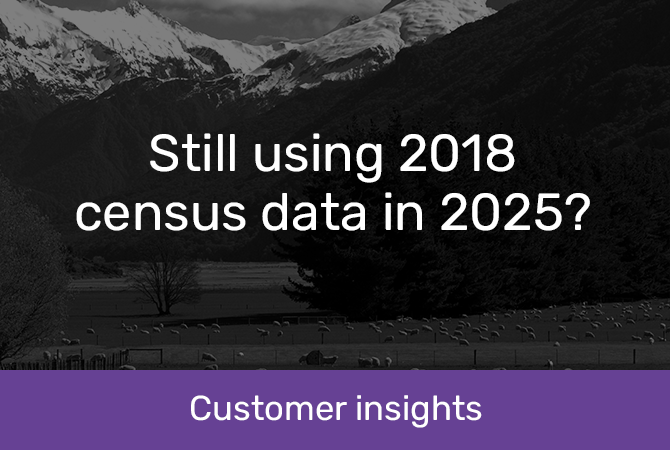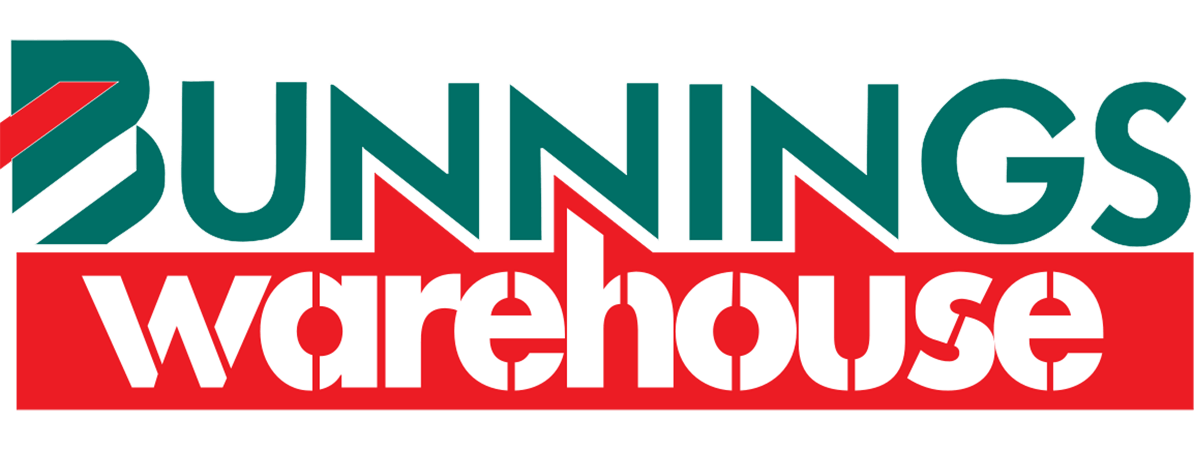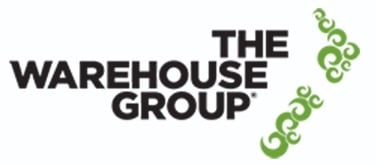Still using 2018 census data in 2025?
The latest New Zealand census findings are out – here’s what they can tell you about your customers and your market
Think about the world back in 2018. Streaming services were a novelty, working from home was rare, and we were all blissfully unaware of COVID-19. It was a very different time. 2018 was also the year of the previous New Zealand census, which means if you haven’t updated your sources, you’re still making decisions based on what life was like back then.
The latest census was carried out in 2023, and the final results are only just being released. We are using this new data to update our clients’ information about household incomes, household size, ethnicity, education and other demographics, so they work with up-to-date insights. These can be used to build customer profiles in your area of operation, identify the best options for new store locations, or segment audiences for precision marketing and outreach.
What makes this latest release even more significant for New Zealand businesses (or Australian organisations looking to cross the ditch) is that the census, as we know it, is about to change. The government has just announced that New Zealand will move away from the full, five-yearly census to monthly reports based on data collected by other agencies. This means it’s the last chance to take advantage of the complete census dataset before we start to navigate the new system.
An expert analytics team like Datamine can help. Datamine has been a leading provider of demographic data for years through our Retailwatch solutions, which support our analytics work. We help businesses in New Zealand and Australia turn data into clear insights that inform marketing, sales, operations and product development.
The 2025 New Zealand census release
The census is a unique source of information: it’s as complete as possible and relatively objective because it’s managed by the government rather than a for-profit business. The final release of the 2023 census data is now available, including infographics and reports around housing, work and income, families and household structures, and the Rainbow/LGBTIQ+ community.
The census is useful, but it’s not the only source of external data available. Transaction data from banks and finance providers, retail spend information across categories or competitor sales information – the more data sources you can access, the deeper your understanding.
For many business leaders, the ‘how’ is a sticking point. You know public data and other resources are out there, but how do you access them, let alone find usable insights? Many businesses don’t have the time to dive into complex data or analytics projects, and no dedicated budget for analytics is another common issue.
This is where aggregators like Datamine fit in. Our Retailwatch solutions, including the Retailwatch dashboard, are an accessible source of up-to-date spend and transaction data. We offer access to the majority of anonymised spend data from across New Zealand, covering roughly 77% of total transactions, updated monthly. This means, when retailers or anyone else leverage Retailwatch data, they know they’re working with accurate, up-to-date data that represents the whole country.
What can census data do for your business?
Depth. Dimension. That’s what census data – and other external sources – can bring to your analytics work. Adding data from sources like the census and Retailwatch to your internal data helps you build a fuller picture of your customers and your competition, which can lead to better-informed decisions about marketing, store locations or product development.
Depending on the source and your business goals, it can be used for:
 Customer segmentation
Customer segmentation
Customer segmentation sorts your audience into groups based on shared characteristics, using internal sales data and external demographics. You can turn this deeper knowledge into informed, customer-centric service, and use it to target marketing and communication or focus on high-value customer groups.
Catchment analysis
Catchment analysis looks at customers in the geographic areas around your stores. By taking an in-depth look at these demographics, you can build detailed customer profiles and make better decisions about product development, marketing and service in each location. The new census data adds depth to this type of analysis thanks to new and updated statistical areas, which reflect population growth, urban development and shifts in community structures.
Share of wallet
Share of wallet (SOW) gives you insight into your customers’ spending. It’s a measure of how much of a customer’s spend in a particular category goes to your business. For example, if a customer spends $100 per week on beauty products, with $30 of that in your business, your SOW is 30%. SOW data can be combined with census information to identify the customer groups most likely to have a low or high share of wallet and target them accordingly.
Benchmarking and market share
Benchmarking, including market share analysis and share of wallet, helps you understand how your performance stacks up in the wider market. If your sales are up 10%, but sales in your product category are soaring, it could mean you’re missing potential growth. While census data isn’t directly used for benchmarking, it does play a part in helping you understand what your customers look like in terms of age, income, household size and location. This, in turn, can help you work out whether you’re over-indexing for certain groups and need to shift your focus.
Turning demographic data into decisions
When Event Cinemas wanted to increase ticket sales at one of its Auckland locations, a combination of internal and external data helped. Using information from the cinema chain’s loyalty programme and national census information, Datamine created a demographic profile of customers living in the area around the cinema, looking at the population size and breaking down the data by household size, age, income and ethnicity. We compared the catchment to the wider Auckland market and found some similarities and some variations – particularly around socioeconomic status and ethnic makeup.
What happened next? Event Cinemas used the findings to create a tailored marketing strategy for that specific demographic, including price variations, subtitled films and targeted promotions, helping combat low ticket sales and bring in more patrons.
This illustrates the value of multiple perspectives and census information, but it’s also an example of analytics in action. Data is interesting on its own, but analytics (and expert support) turn it into usable insights that can be applied in your business. Analytics helps you align research and development with demand, focus marketing spend in the right areas, track internal performance and external trends, and forecast demand into the future. The broader goal is optimising your performance to boost sales and maximise ROI.
Get your hands on the latest NZ demographic and geographic data
Is your data past its prime? If you’re still making decisions based on demographic information from the 2018 census – or not leveraging external information at all – you could be missing potential customers or losing sales to the competition.
But how do you turn a waterfall of data into a stream of useful insights? Most businesses aren’t doing it alone – instead, they’re partnering with data providers and analytics experts like Datamine.
We offer access to some of the most comprehensive datasets in New Zealand through our Retailwatch solutions, and build bespoke analytics tools for businesses across New Zealand and Australia. We’re also keeping a close eye on changes to the census collection process, so we can keep feeding accurate, up-to-date data to our clients.
Our approach is always about what works best for you and your business. We work closely with your teams, learn about your goals and priorities, and design a solution together – there’s no such thing as an off-the-rack product. While the final census data is just rolling out, we’re already using updated population and demographic information across a range of client projects to solve stubborn problems.
We can help you do the same. Talk to the team to get started.





















































